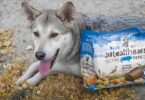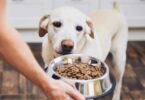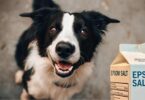Most pet owners feed their pets with the same food as a way of bonding. The begging eyes at dinner time usually raise a question of what is really safe. A typical question is whether some human snacks fit the animal health requirements.
This paper discusses the dangers and precautions of processed meat in pet foods. Although the cooked varieties may appear harmless, the ingredients used such as garlic or onion powder that are common in seasoned varieties are very dangerous. Any quantity of these additives may cause gastrointestinal problems or chronic conditions.
Preparation methods matter greatly. Raw meats that are cooked without oils or spices minimize possible risks. Nevertheless, it is important to remember moderation, as high levels of fat in most of the processed foods can cause discomfort to the stomach.
Subsequent paragraphs will break down nutritional profiles, compare the varieties of sausages, and provide vet-recommended feeding regimes. Information provided by veterinary nutritionists and animal health agencies makes it possible to keep the treats safe and fun.
Exploring the Appeal of Sausage for Dogs
The mouthwatering aroma of grilled sausage can easily draw the attention of a pet well before it is put inside its bowl. The smoked or cured meat contains rich aromas that are instinctual to animals, and such products are very tempting. Although the use of protein-rich ingredients helps to satisfy natural cravings, there are hidden dangers underneath.
Nutritional Aspects of Sausage
Processed foods such as sausages have moderate amounts of protein but contain too much sodium and fat. One link can have 30 percent of the sodium intake of a human being in a day, which is too much in the case of smaller pets. In spite of the fact that meat contains essential amino acids, excessive processing removes nutrients and introduces empty calories.
Common Additives and Ingredients
Commercial brands often contain onion powder or garlic which is poisonous to dogs. Even in small quantities these seasonings destroy red blood cells. Digestion problems are also presented by preservatives such as nitrates and artificial flavor enhancers.
Unseasoned, homemade ones remove most of the dangers but still need to be controlled in portions. Always check labels of hidden irritants before sharing any human-grade meats. In case of doubt, use vet-approved animal food in the form of treats.
Assessing Health Concerns When Feeding Sausage
Although feeding table scraps may appear to be harmless, some of the ingredients used in sausages are very dangerous to the health of a dog. Refined types usually have ingredients that are difficult to digest by animals and their health in the long run. Understanding these risks helps owners make safer treat choices.
High Salt, Fat, and Additive Risks
An average sausage link has 500mg sodium which is 1/3 of the daily allowance of a human being. In smaller pets, this salt level puts a burden on kidneys and exposes them to dehydration. The presence of high levels of fat (15-30 percent per serving) can cause pancreatitis, which is a painful inflammation that needs emergency treatment.
Such preservatives as nitrates seem to be harmless but turn into harmful compounds during digestion. Flavor additives such as onions and garlic powder destroy red blood cells in minute quantities. Regular consumption is associated with a high blood pressure and weight gain according to veterinary reports.
Potential Allergies and Intolerances
Some animals develop sensitivities to processed meats over time. Protein intolerances are often signaled by such symptoms as itching, vomiting, or diarrhea. Skin irritations are common with flavored varieties that contain artificial colors and MSG.
Watch for lethargy or reduced appetite after feeding sausage. These signs might indicate digestive distress. Reactions should always be consulted with a veterinarian in case they do not stop, since chronic exposure may aggravate such conditions as arthritis or heart disease.
Can Dogs Eat Sausage: Guidelines for a Safe Treat
The owners of pets who want to treat their pets with delicious bites should be concerned about safety. Following vet-approved preparation methods ensures occasional indulgences remain risk-free.
Proper Cooking and Preparation Methods
Begin by boiling or grilling plain meat without oils, spices and casing. High heat eliminates harmful bacteria like salmonella. Cut off all fat that can be seen and cut into pea-sized pieces to avoid choking.
Unseasoned varieties minimize exposure to toxic additives. Smoked or cured ones should be avoided since they usually have some preservatives. Let cooked portions cool completely before serving.
Importance of Moderation in Dosage
Restrict to one teaspoon per 10 pounds body weight a week. Fat overload puts a burden on the pancreas and sodium overload can lead to dehydration. Treats should never exceed 10% of daily calories.
Space out indulgences to avoid digestive upset. Monitor the frequency with a calendar or app. Take with fresh water to facilitate digestion.
A veterinarian should be consulted to adjust serving sizes to breeds that are sensitive. Put all these together to have nutritional balance and enjoy every now and then.
Comparing Different Types of Sausages for Dogs
The choice of safe meat products should be associated with the knowledge of the influence of the processing procedures on the health of pets. Some varieties are more appropriate as occasional treats than others because of the ingredients and preparation styles that differ widely between options.
Plain vs. Flavored Varieties
Unprocessed varieties reduce risks by not using poisonous ingredients such as garlic or onions. Even in minute amounts, these spices are harmful to red blood cells. Unseasoned meats provide protein that is lean and free of fillers.
Flavored sausages often contain preservatives like sodium nitrate. Artificial enhancers may trigger allergies or digestive issues. Always check labels for hidden irritants before sharing.
Store-Bought Versus Homemade Options
Synthetic additives and high sodium are common in commercial products. Pre-packaged foods contain an average of 500mg salt per serving, which is too much on smaller breeds. Nitrates found in cured meat can be transformed to toxic substances in the digestive system.
Homemade recipes let owners control ingredient quality. Use fresh ground meat without casings or seasonings. Lean cuts such as turkey can be baked or boiled to be safer.
Expert-Approved Choices:
- Boiled chicken sausage (unsalted)
- Homemade turkey meatballs
- Unseasoned pork scraps (fat removed)
Integrating Sausage into a Balanced Canine Diet
Balancing tasty rewards with nutritional needs requires careful planning. Processed meats are not meant to substitute whole meals but may be used as an occasional supplement to whole meals when they are safely prepared. Always prioritize your pet’s primary diet formulated by veterinarians.
Tailoring Treat Quantities
Small breed dogs such as Chihuahuas can have half a teaspoon of cooked sausage once a week, whereas larger breeds such as Labradors can have a tablespoon. Adjust portions based on activity levels and health conditions. Overfeeding risks pancreatitis and obesity.
Nutritious Reward Alternatives
Many human foods make safer snacks. Consider these vet-approved options:
- Steamed carrots or green beans
- Plain boiled chicken breast
- Blueberries or apple slices (seeds removed)
Mobile apps allow tracking the calories consumed to ensure that they do not exceed 10 percent. Add new things slowly and observe the response such as itching or stomach upset. Regular meal times will avoid gastrointestinal imbalances and keep energy levels stable.
Final Thoughts on Safe Sausage Treats for Your Dog
When using human food as a reward, one should be very cautious about safety and nutrition. Although pets may beg like crazy to taste delicious morsels, their health is a matter of informed decisions. Processed meats demand extra scrutiny due to hidden hazards.
Only plain, well-cooked without additives varieties are safe. Seasoned products such as garlic or onion powder can destroy blood cells. There are also dangers of high sodium and fat content, such as dehydration and pancreatitis.
Follow these guidelines for responsible sharing:
- Eat small amounts of food at times, not more than 10 percent of the daily calories
- Always remove seasonings and casings before serving
- Monitor reactions like vomiting or lethargy closely
- Consult your veterinarian about breed-specific risks
Whenever feasible, use commercial pet treats that are intended to be consumed by animals. In case homemade meat rewards are chosen, then lean cuts should be used and no spices should be added. Regular moderation can keep a person alive and minimize health complications in the long run.
Thoughtful treat practices strengthen bonds without compromising wellness. Owners can enjoy time with their companions by being cautious in their indulgence.
FAQ
Are certain sausage ingredients toxic to pets?
Yes. Most of them include garlic, onions, or too much salt, which are toxic to dogs. Always check labels for these additives before sharing.
How often can pets consume meat-based human foods safely?
Small amounts (once a week) of plain cooked meat such as chicken or turkey are safer than processed ones. Consult your vet for breed-specific advice.
What symptoms indicate adverse reactions to processed meats?
Vomiting, diarrhea, or lethargy may signal intolerance. High-fat types could cause pancreatitis- a severe disorder that needs urgent veterinary care.
Do homemade sausage recipes reduce health risks?
Non-cured homemade types do not use preservatives such as sodium nitrate, but lean meat and cooking to reduce the risk of bacterial contamination is still necessary.










Leave a Comment